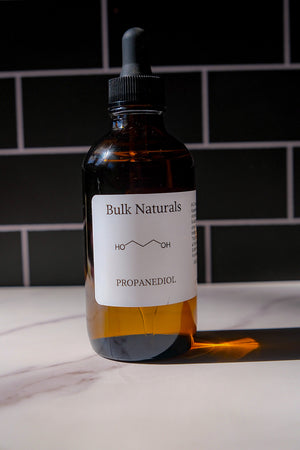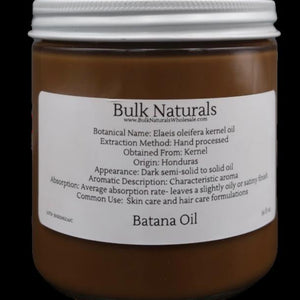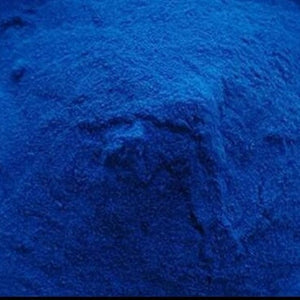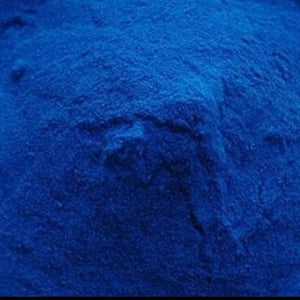Introduction: The Move Toward Natural Protection
Pet owners are becoming increasingly cautious about synthetic flea and tick treatments, many of which contain harsh chemicals that may irritate skin, disrupt hormones, or pose other health risks. The demand for natural, plant-based prevention methods has grown rapidly—especially as people look to protect their pets and the environment.
At Bulk Naturals Wholesale, we offer high-quality, formulation-ready ingredients that allow you to create safe, effective flea and tick prevention solutions. Whether you’re a pet care brand, groomer, or DIY pet parent, our ingredients make it easy to develop natural sprays, shampoos, and balms designed with your pet’s health in mind.
Understanding the Flea & Tick Challenge
Fleas and ticks thrive in warm, humid environments and can quickly reproduce, making infestations difficult to control once they start. Prevention is always the best approach, which means focusing on:
-
Topical protection: Keeping pests off your pet’s skin and coat
-
Environmental control: Eliminating pests from bedding, carpets, and outdoor areas
-
Skin support: Helping pets recover from irritation or bites naturally
Why Choose Natural Prevention?
Natural flea and tick prevention:
-
Reduces exposure to synthetic pesticides
-
Supports overall skin and coat health
-
Can be customized for sensitive pets
-
Uses multi-pronged protection—repelling pests, soothing bites, and conditioning fur
With consistent use, plant-based products can help maintain a pest-free environment—especially when combined with good grooming, regular vacuuming, and clean bedding.
Top Natural Flea & Tick Prevention Ingredients
Neem Oil – Virgin Organic
Why it works:
Neem oil (Azadirachta indica) contains natural compounds like azadirachtin that disrupt the life cycle of fleas and ticks. It also soothes itchy, irritated skin caused by bites.
Best for:
-
Flea & tick repellent sprays
-
Anti-itch shampoos
-
Healing balms for bite relief
Usage tips:
Dilute to 1–2% in carrier oils for direct skin application or 0.5–1% in pet-safe sprays. Avoid overuse in cats, as they may be more sensitive.
Calendula Flower Infused Oil PLUS CO₂ Calendula Essential Oil
Why it works:
Calendula is known for its anti-inflammatory and skin-repairing properties. While not a direct insect repellent, it’s ideal for soothing the skin after flea or tick bites and for supporting healing.
Best for:
-
Post-bite healing balms
-
Soothing paw or skin salves
-
Gentle spray bases for irritated skin
Usage tips:
Use alone as a carrier or blend with other repellent oils for a 2-in-1 protective and healing formula.
Colloidal Oatmeal PF (Colloidal Oatmeal & Leuconostoc/Radish Root Ferment Filtrate)
Why it works:
Oatmeal creates a protective skin barrier and relieves itching—essential for pets recovering from flea bites or irritation caused by pest activity.
Best for:
-
Medicated-style shampoos
-
Leave-on sprays for itch relief
-
Paw soaks
Usage tips:
Blend into water-based shampoos or sprays at 2–5%. Safe for both dogs and cats.
DIY Lavender-Infused Oat Oil (Oat Oil + Whole Lavender Buds)
Why it works: Oat Oil deeply nourishes the skin and coat, while lavender offers a naturally calming scent that also repels certain insects.
How to make it:
-
Fill a clean glass jar halfway with Whole Lavender Buds.
-
Pour Oat Oil over the buds until fully covered.
-
Seal and store in a warm, dark place for 2–4 weeks, shaking gently every few days.
-
Strain through cheesecloth into a clean container.
Best use: Use as a standalone coat oil or blend into pet-safe balms. Use up to 5% in spray formulas or as a carrier in oil blends.
Virgin Coconut Oil
Why it works:
Coconut oil contains lauric acid, which has been shown to deter fleas and ticks naturally. It also moisturizes dry, flaky skin and supports the healing of minor wounds.
Best for:
-
Protective coat treatments
-
Balm bases for skin health
-
Dry skin or hot spot relief
Usage tips:
Blend with neem or lavender oils for added pest-repelling benefits.
Juniper Berry Extract Powder
Why it works:
Juniper has natural astringent and antimicrobial properties, making it a great choice for cleansing and purifying pet skin and fur.
Best for:
-
Cleansing shampoos
-
Spray mists for skin support
Usage tips:
Use in rinse-off formulas or diluted sprays at safe concentrations.
Plantain Leaf Extract Powder
Why it works: Rich in allantoin, plantain extract helps speed healing, calm itching, and reduce inflammation caused by bites or scratching.
Best use: Add to salves, sprays, or rinses for soothing relief.
Usage tips: Can be added to water-based sprays or balms at 1–2% to help soothe bites and irritation.
Chamomile Extract Powder
Why it works: Chamomile reduces redness and irritation, while providing mild antimicrobial benefits.
Best use: Mix into pet-safe sprays or ointments. Use at low concentrations for cats.
Usage tips: Works well in calming mists or rinses at 0.5–1%, helping reduce redness and itching.
Environmental Control: Eliminating Fleas & Ticks from Your Pet’s Space
Even if you treat your pet, fleas and ticks can persist in their environment — bedding, carpets, and outdoor spaces. These natural BNW solutions can help.
Diatomaceous Earth
Why it works: Diatomaceous Earth (DE) is made from fossilized algae that dehydrate and kill fleas and ticks on contact — without chemicals.
How to use it safely:
-
Sprinkle lightly on pet bedding, carpets, and along baseboards.
-
Leave for 12–24 hours, then vacuum thoroughly.
-
For outdoor use, apply in shaded, dry areas where pets rest.
Important: While DE is considered safe for pets, always handle with care. Avoid creating dust clouds, as inhaling fine particles can irritate the lungs of both humans and animals. Never apply DE directly to your pet’s coat without veterinary guidance—instead, focus on applying it to bedding, carpets, and areas where pests may hide. Always vacuum thoroughly after use.
Safety First: Choosing Ingredients for Cats vs. Dogs
Not all natural ingredients are safe for all pets. While dogs can tolerate certain essential oils and higher concentrations of plant actives, cats metabolize these compounds differently, making them more sensitive to toxicity.
When formulating for your pets:
Safe for Dogs (in proper dilution):
-
Certain essential oils (lavender, cedarwood, lemongrass, peppermint)
-
Neem oil
-
Herbal infused oils
-
Gentle plant extracts
Safe for Cats (with caution):
-
Herbal infusions (lavender buds, calendula, oat oil)
-
Hydrosols (alcohol-free)
-
Neem oil in very small amounts (if tolerated)
-
Carrier oils like oat oil, jojoba, calendula-infused oil
Avoid for Cats:
-
Undiluted essential oils (even “gentle” ones)
-
Citrus oils
-
High-phenol essential oils (tea tree, thyme, oregano)
Pro Tip: Always test new products on a small area first and monitor your pet for any signs of irritation, excessive grooming, or behavioral changes.
DIY Recipe #1: Dog-Safe Flea & Tick Conditioning Oil
This lightweight oil blend conditions the coat while using natural repellents to help deter fleas and ticks.
Ingredients (30ml batch):
-
15ml Oat Oil
-
10ml Calendula Flower Infused Oil PLUS CO₂ Calendula Essential Oil
-
3ml Neem Oil
-
1ml Lavender Essential Oil (dog-safe dilution)
-
1ml Cedarwood Essential Oil (dog-safe dilution)
Instructions:
-
In a sanitized glass bottle, combine oat oil, calendula-infused oil, and neem oil.
-
Add essential oils and swirl gently to combine.
-
Label and store in a cool, dark place.
To Use:
Apply a few drops to your palms, rub together, and massage lightly through your dog’s fur—focusing on the back of the neck, base of the tail, and underbelly. Use 2–3 times per week during flea season.
DIY Recipe #2: Cat-Safe Herbal Flea & Tick Prevention Collar
Why a collar?
Cats are more sensitive than dogs to many natural pest-control ingredients, so it’s important to avoid applying concentrated essential oils or strong herbal extracts directly to their skin or fur. A collar creates a safe barrier zone of mild scent without direct application, making it a good low-risk option.
Ingredients:
-
2 tbsp Oat Oil
-
1 tbsp Calendula Flower Infused Oil PLUS CO₂ Calendula Essential Oil
-
1 tbsp dried Whole Lavender Buds (for infusion)
-
Cotton or hemp pet-safe collar
Instructions:
-
Infuse the oil:
- Place lavender buds in a small glass jar.
- Cover completely with the oat and calendula-infused oils.
- Let sit for 1–2 weeks, shaking occasionally. Strain before use.
-
Apply to collar:
-
Drip a few drops of the infused oil onto the fabric collar and allow it to absorb fully before putting it on your cat.
-
-
Refresh oil every 2 weeks during flea season.
Note: Do not use essential oils directly on cats—stick with herb-infused oils for safety.
Important Notes on Effectiveness
This collar is a gentle deterrent, not a full pesticide treatment. It works best as part of a layered prevention approach, including:
-
Environmental control – Use Diatomaceous Earth on pet bedding, carpets, and outdoor resting areas to kill fleas and ticks mechanically without chemicals.
-
Regular grooming – Comb your cat weekly with a flea comb to remove any pests before they multiply.
-
Clean bedding frequently – Wash pet beds, blankets, and soft toys in hot water weekly.
-
Outdoor awareness – Keep cats away from tall grass, brush piles, and wooded areas during peak flea/tick season.
DIY Flea Bath with Castile Soap
A gentle, non-toxic wash to help remove fleas from your pet’s coat.
Ingredients:
-
Unscented Liquid Castile Soap – 2–4 tbsp (adjust for pet size)
-
Warm Water – enough to fill your sink, tub, or pet basin
-
Optional for Dogs Only: 1–2 drops BNW Neem Oil (do not use on cats)
Instructions:
-
Prepare the Bath: Fill your sink or tub with enough warm (not hot) water to cover your pet’s legs and lower body.
-
Dilute the Soap: Mix the Castile soap into the water. If using for dogs, add neem oil and swish to combine.
-
Wet Your Pet: Gently pour water over your pet’s coat until fully saturated.
-
Lather & Wait: Massage the diluted soap into the coat, focusing on the neck, tail base, and underbelly. Allow the suds to remain for 10–15 minutes — this helps suffocate adult fleas.
-
Rinse Thoroughly: Remove all soap to prevent skin dryness.
-
Comb: Use a flea comb to remove dead fleas and debris.
-
Dry: Towel dry thoroughly and keep your pet warm until fully dry.
Safety Notes:
-
Cats: Always use unscented Castile soap. Do not use neem oil or essential oils.
-
Avoid eyes, ears, and mouth.
-
Frequent bathing may dry the skin — limit to once every 1–2 weeks during flea season and pair with other prevention methods.
Safety Notes for Natural Flea & Tick Prevention
-
Always check species safety — some essential oils and botanicals are safe for dogs but not for cats.
-
Perform a patch test before full use to ensure no allergic reaction.
-
Never apply undiluted essential oils directly to pets.
-
Avoid eyes, nose, and genitals when applying any topical product.
Final Thoughts
Natural flea and tick prevention is not only possible—it can be highly effective when paired with consistent grooming and environmental management. BNW’s high-quality oils, extracts, and infused blends allow you to create targeted pet care products that protect, soothe, and support healthy skin.
Shop Bulk Naturals Wholesale’s pet-safe ingredients today and start formulating natural flea and tick solutions that pets (and their owners) will love.









Leave a comment